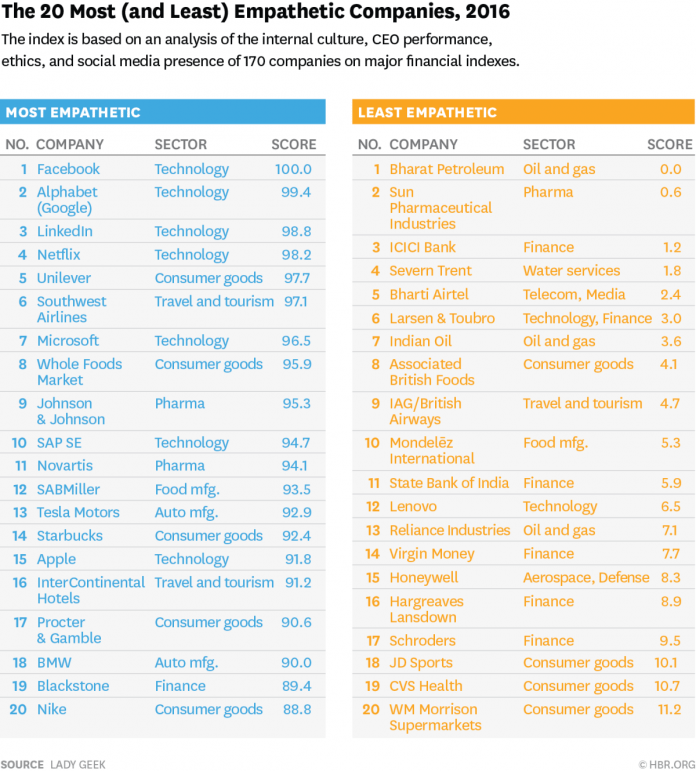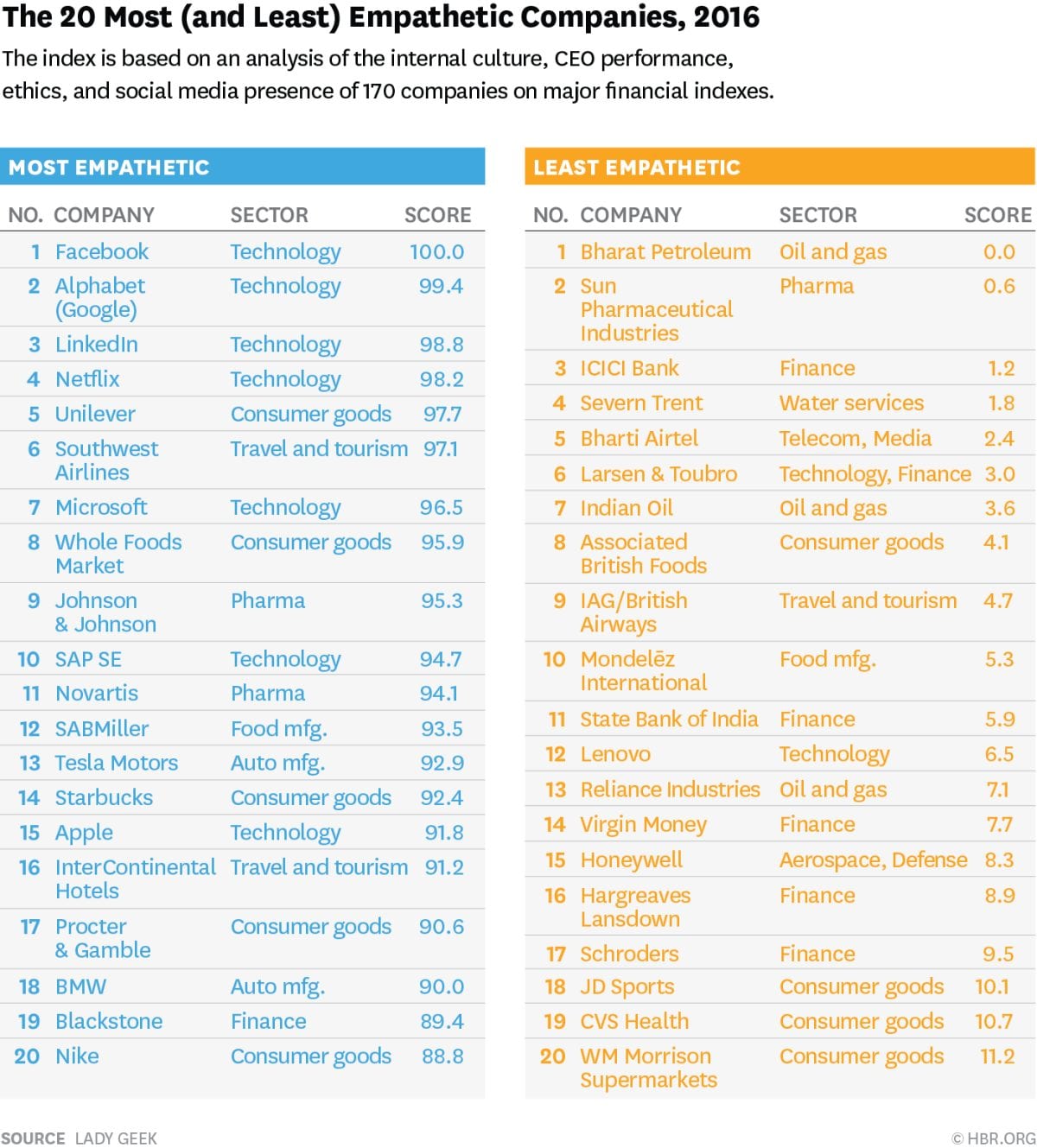
Empathy has never been in more explicit demand from corporate leaders — particularly after a divisive U.S. presidential election and amid continued economic uncertainty around the globe. As the newly released 2016 Empathy Index demonstrates, empathy, which is about understanding our emotional impact on others and making change as a result, is more important to a successful business than it has ever been, correlating to growth, productivity, and earnings per employee.
The Empathy Index seeks to answer the question: Which companies are successfully creating empathetic cultures? These are the companies that retain the best people, create environments where diverse teams thrive, and ultimately reap the greatest financial rewards.
The index focuses on global companies, with an emphasis on UK and U.S. companies and 10 Indian companies. It was not possible to analyze Chinese countries as we hoped, due to a lack of publicly available information. Additional geographies, including Africa, will be added in the next report, in March 2017.
Results
The top 10 companies in the Global Empathy Index 2015 increased in value more than twice as much as the bottom 10, and generated 50% more earnings (defined by market capitalization). In our work with clients, we have found a correlation as high as 80% between departments with higher empathy and those with high performers.
Empathy, we found, is correlated with ethics, and any ethical failure can prove costly. This is evidenced by the drop in Deutsche Bank from 40th in 2015 to 110th this year and by Wells Fargo plummeting from 20th to 130th. Both falls came in light of the two companies’ recent scandals and poor brand perception, both factoring into our index.
The tech sector continues to lead our ranking, now accounting for an even bigger share of our top ten (60% in 2016 versus 50% in 2015), with Facebook knocking Microsoft off the top spot, owing to its focus on improving its internal culture and the introduction of the Empathy Lab.
Creating a More Empathetic Company
How do you go about infusing your company culture with more empathy? Start by identifying the trouble spots — the activities and behaviors that communicate a lack of empathy — and addressing them. Ryanair did this with its “Always Getting Better” program in 2014, scrapping unallocated seating and many hidden charges and reducing carry-on luggage restrictions. CEO Michael O’Leary said, infamously, “If I’d only known being nice to customers was going to work so well, I’d have started many years ago.” The result was a rise of 13 places in this year’s index and a net profit increase from €867 million the previous year to €1.24 billion ($1.39 billion) in the year to end-March 2016.
Taking the first step does not have to be dramatic or costly. One way to promote empathy in an organization is to deliver small “empathy nudges” systematically. The nudges may seem insignificant in isolation, but in aggregate they can have a big impact. One idea from a European bank is to create an “empathy fund,” a small pot of money that retail staff can use at their discretion to engage with customers, for example, by sending a sympathy card to a bereaved client. At an automotive company, micronudges have included allowing salesmen to go tie-less and displaying signs that detailed the benefits of vehicle features to drivers. These and other small gestures have been credited with goosing sales by 23% compared to dealerships that did not adopt the empathy program.
Finally, as with all activities aimed at change, it’s important to measure empathy — a task that’s easier than it sounds as long as you measure what matters. We use a variety of public data sources (as we have in the previous indices) that correlate to empathy: the ethics of a company, how a company is led, what the employees think of the CEO, and how many scandals and audit infractions the company has had. The first step to being empathetic is to diagnose where the problems and strengths of the organization are in order to focus resources.




































